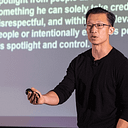What Your Demographics Say About Your Health
Race, gender, and age. Three things that define us, whether we want it to or not. How do those factors correlate to things like positivity, productivity, and specifically health and exercise habits?
I wanted to understand the readers of the Venture Out, my publication focused on exactly that, positivity and productivity. Frequent themes of the Venture Out include adventure, health, and relationships. From the survey, over 60% rate themselves as healthy, and over 80% as eating healthy!
The short survey was conducted using Typeform, which was open for 5 days and collected data from 118 participants. User demographic data are below and tracks pretty closely to the overall audience demographic stats.
Major Demographic Takeaways
By Race:
- 38% of Hispanics/Latinos say they exercise a lot or vigorously, versus 14% of African Americans
- 42% of White/Caucasians say they exercise for 30 minutes or more, versus 24% of Hispanics/Latinos
- By Gender: 43% of Females exercise for 30 minutes or more, versus only 30% of Males
- By Age: As you get older, the length of a workout decreases, but the intensity stays consistent across all age ranges.
Major Venture Out Readership Takeaways
Positivity:
- Positivity increases as you get older
- Positivity is equal between males and females
- Approximately 80% of Venture Out readers say they are more Positive/Optimistic versus Negative/Pessimistic. I’d like to think that’s because they read the Venture Out. ;)
Exercising:
- Walking is the most common form of exercise for readers
- As you can see, all other forms of exercise drop off quickly. I was surprised to see weight lifting as the second most popular form of exercise, especially since over 60% of those surveyed are over 45 years of age.
Productivity:
- 80% of Asians say they are highly productive, versus only 58% of White/Caucasians
- 67% of Males say they are highly productive, versus 59% of Females
- Age range 35–44 rate themselves lowest compared to all other age ranges
Really interesting takeaways here! The difference between males and females are particularly striking, and might be because females are harder on themselves. And then the age range of 35–44 rated themselves lowest, which might be because a lot of major life changes might be occurring.
Evening & Sleep:
- 32% say they have trouble falling asleep.
Finally, this stat was a tad depressing. That’s almost 1 out of every 3 people have trouble falling asleep. When asked why, “Other” was picked the most, despite being given choices of being too busy (#2), financial problems (#3), health issues (#4), and relationships (#5).
Conclusion
So, what actionable steps can we take away from this?
- Keep on exercising hard, but don’t decrease the duration as you get older, especially men.
- Keep on walking, but try adding some other forms of workout, especially swimming and running which has huge benefits.
- Ladies, don’t be so hard on yourself! You workout longer than men, but then say you’re less productive.
- Don’t be that 1 out of 3 that have trouble falling asleep. Start being proactive now and develop healthy sleep habits.
